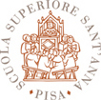History perspective
The Centre was established in 2001, thanks to the joint effort that Scuola Superiore Sant'Anna decided to undertake in the telecommunications sector in collaboration with Marconi Communications SpA (now Ericsson). These two parties, in partnership with CNIT (National Inter-University Consortium for Telecommunications), signed a ten-year agreement for the creation of a research centre for photonic networks and technologies, thus realising through it a unique example of synergy at an Italian level.
The facilities on the whole area an example of Integrated Research Centre, both public and private, in the field of Photonic Networks and Technologies. The integrated ensemble of InReTe (Telecommunication Network Engineering) laboratory with CNIT National Photonic Network Laboratory (LNRF) jointly presents itself as the IRCPhoNeT – Integrated Research Centre on Photonic Networks and Technologies.
During the years, the Centre attained a prominent position in the national and international scenario, thanks to the several agreements with foreign universities, experiences of joint laboratories and European and Extra- European level partnerships.
In 2003, the Centre was given an administrative, accounting and managerial autonomy, thus becoming a Class "A" Centre of Cost, according to the Charter of the School.
With the aim of strengthening the unitary action and representing, for the School, an even more important centre for information and telecommunication engineering, it was decided to merge the ReTiS (Real-Time Embedded Systems) Laboratory with the Centre from 1st January 2007. ReTiS Laboratory works in the field of information engineering, especially referring to two main application scopes: the first refers to the systems dedicated to "real-time" applications; the other to the systems for the modelling, simulation, management and automation of procedures and documentary flows.
The activities of the Engineering sector at the Polo San Cataldo of Pisa- where the CEIICP is located - have gradually been increased.In 2009 they were further expanded with the confluence of the PERCRO Laboratory (Perceptual Robotics Laboratory) and they came to include also the subject of Perception Engineering (perceptual robotics). The mission of the PERCRO Laboratory is to study, design and develop concepts and advanced interaction technologies to improve communication between humans and their increasingly responsive environment, especially where virtual environments and telerobotic systems are concerned.
In terms of content, the confluence in a single operational structure of sectors which are increasingly connected and intertwined (such as Information, Communication and Perception Engineering) is a well-timed choice of sensitivity relative to the current trend, with significant added value and with a capacity to respond to interdisciplinary challenges which are increasingly arising from different sectors of engineering.


